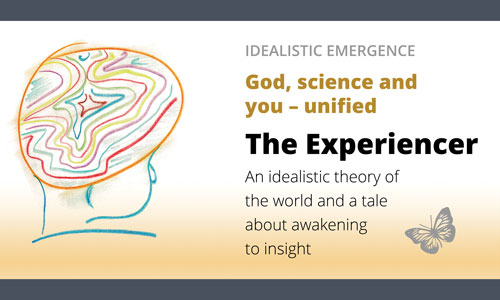Time and distance create the notion of «movement».The Experiencer now knows the concepts «time» and «distance». The two are bound together in a linear causal relationship since time is an emergent interpretation of distance.
Time and distance must now be considered combined. That is how the Experiencer functions.
Time creates change in distance. Deviant distances are caused by varying times. Together they form something third.
Whenever two things unite, something third occurs, the sum of the two.
This third emerges from the first two.
That is the very definition of emergence, at least our definition.
Something third?
What is the higher, emergent interpretation of «distance-time» or «spacetime», as Einstein called it?
The answer is not intuitive.
You experience both distances and time yourself, but that these two should create something third that can also be experienced is not immediately evident to everyone. We do not experience it directly, we think, but we do.
Distance and time combined are «motion», i.e. change over time in position along the distance between the points.
The Experiencer imagines, conceptualises that the points change position as time changes.
The more time, the greater the change in distance.
To put it a little popularly, the Experiencer has a feeling of space. It also feels the extent of time, and the Experiencer has now realised that the position of the points in space and time is bound to each other and that this bond, which is something new, is interpreted and experienced as «motion».
And how is motion experienced?
As motion.
If you have ever experienced seeing a point change position as time passes, you know precisely how motion is experienced.
It is not more complicated than that.
Not only do we measure the movement by the time, but also the time by the movement, because they define each other.
AristotleThe Experiencer now has what it takes to imagine the points moving around. Or rather, the Experiencer experiences – in fact – points moving all over the place.
The world trembles.
It's reasonable to believe that this is what in physics is called quantum fluctuations, i.e. the frenetic movements in the zero-point field1.
As mentioned, according to physics, there should be 10
120 such events per second per square centimetre in the entire universe.
That's an insanely large number.
